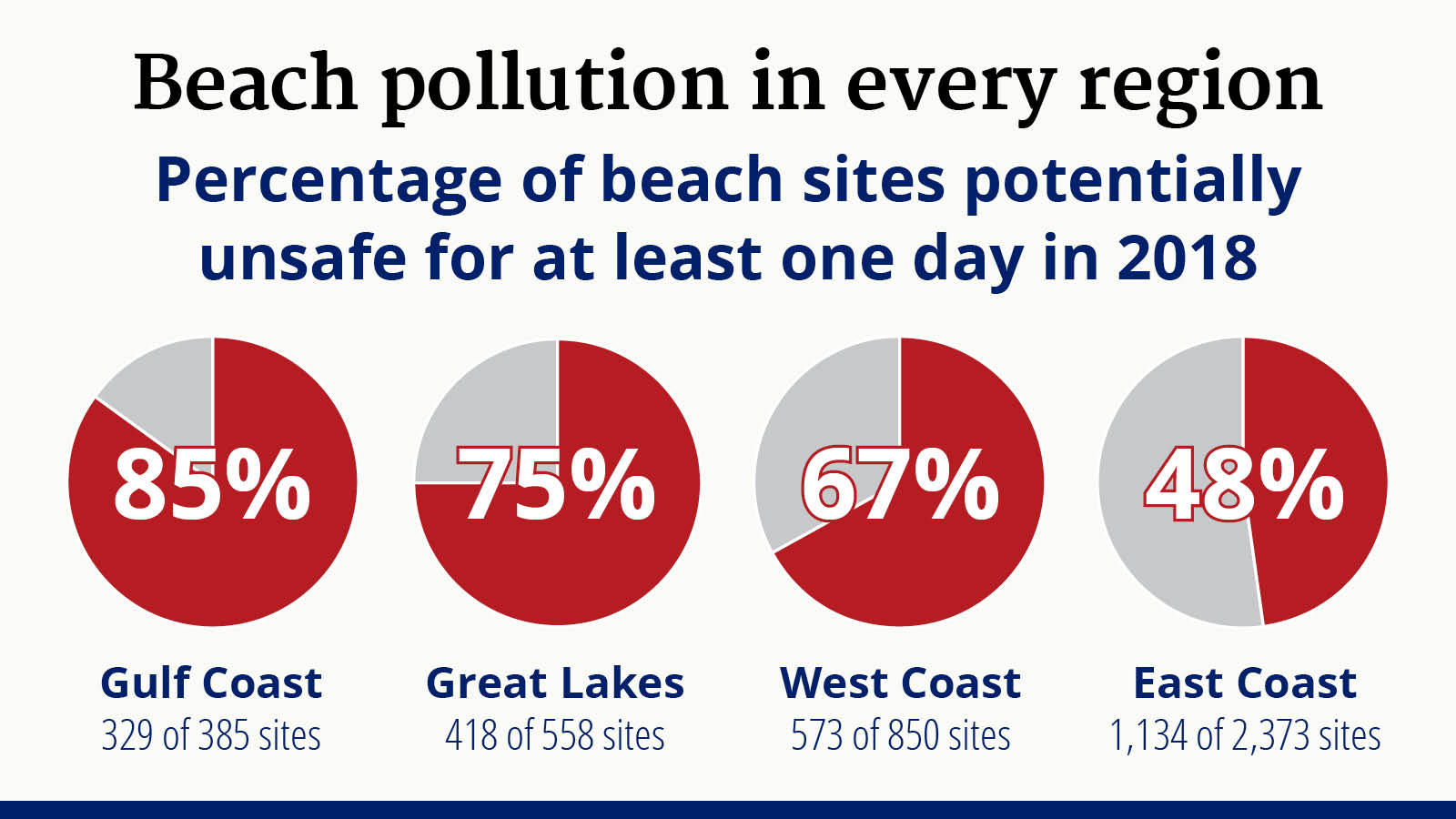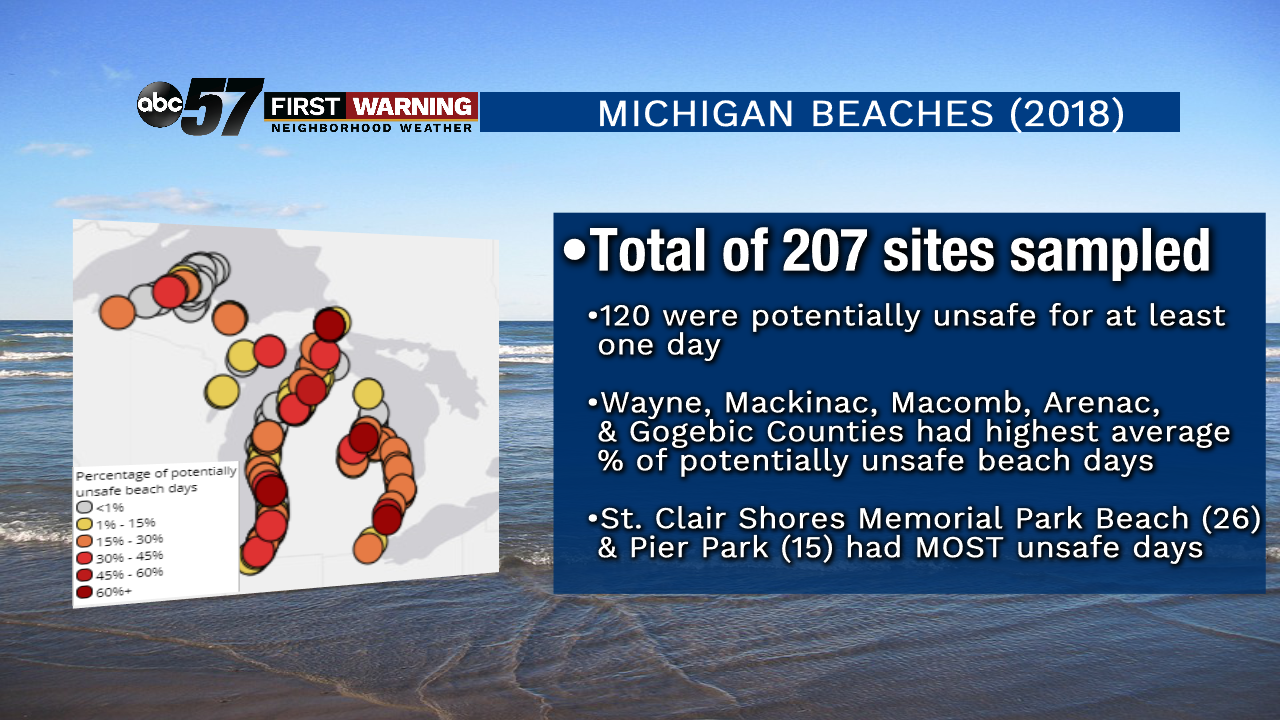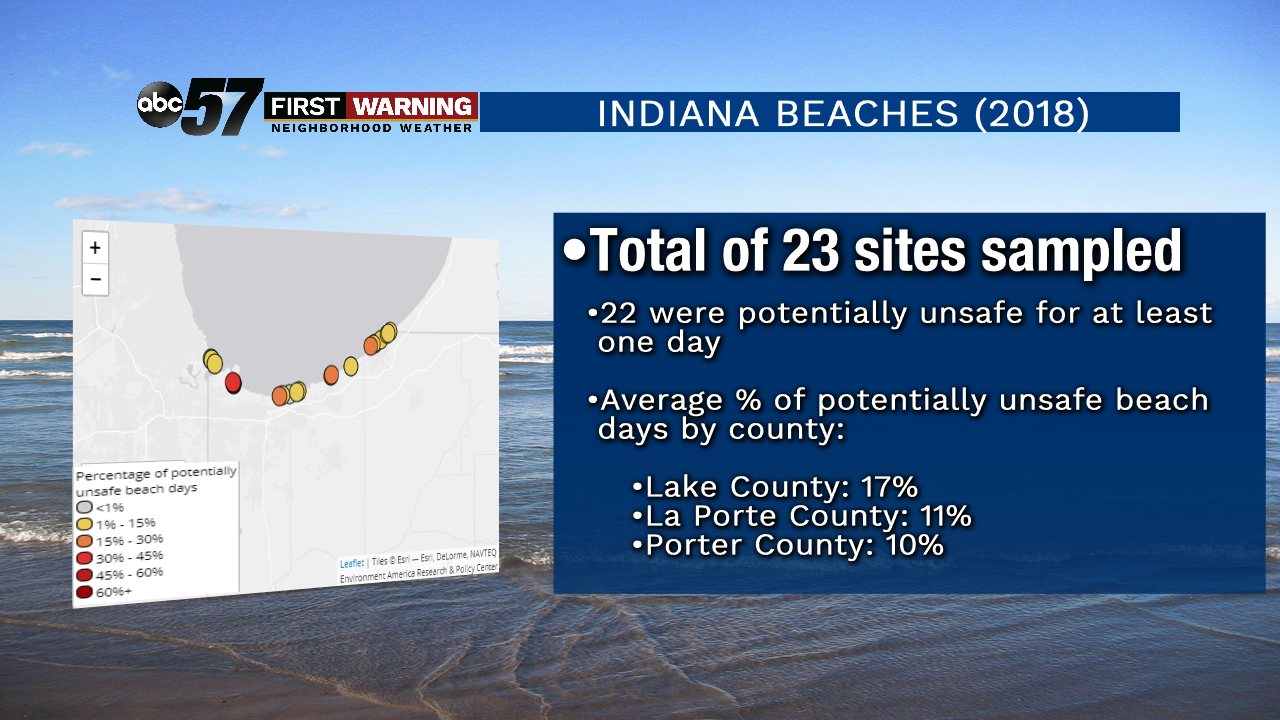Unsafe levels of pollution found at 75% of Great Lakes beaches in 2018, a study finds
Heading to the beach in the near future? You may want to check the water conditions before entering the water. Not just at the ocean, but in the Great Lakes as well.
A new report from the Environment America Research & Policy Center and Frontier Group analyzed bacteria sampling data at beaches across the U.S. and Puerto Rico. What it found may come across as gross.
Of the 4,523 beach sites sampled, a total of 2,620 were listed as potentially unsafe for swimming on at least one day in 2018. A whopping 605 beach sites were potentially unsafe at least 25% of the days that sampling took place.
To determine if a beach site is unsafe for swimming, the report looked at whether or not bacteria levels exceeded the U.S. Environmental Protection Agency's "Beach Action Value threshold."That is the level at which the agency estimates 32 out of 1,000 swimmers will get sick from swimming in the water.
85% of sites tested in the Gulf Coast had potentially unsafe levels of fecal contamination for at least one day in 2018. The Great Lakes region wasn't far behind with 75% of all beach sites having unsafe levels of fecal contamination for at least one day.In Michigan, 58% of all beach sites tested had potentially unsafe levels of contamination for at least one day. Warren Dunes Beach (31%) and South Haven North Beach (33%) had the highest percentages of potentially unsafe days when it comes to local beaches.
Indiana has far less beaches than Michigan, but 96% of the sites sampled in Lake, Porter and La Porte Counties came back as being potentially unsafe for at least one day in 2018.Jeorse Park Beach I & II, Buffington Harbor Beach, Indiana Dunes State Park East Beach, and Washington Park Beach had the most potentially unsafe days of the 23 beach sites analyzed.
This is all significant because contact with the bacteria-contaminated water can result in gastrointestinal illness, respiratory disease, ear and eye infections, and skin rashes, according to the report.
The report lists some recommendations, but the overall suggestion is that policymakers should work on protecting beaches from runoff and sewage pollution to ensure safe water conditions.




